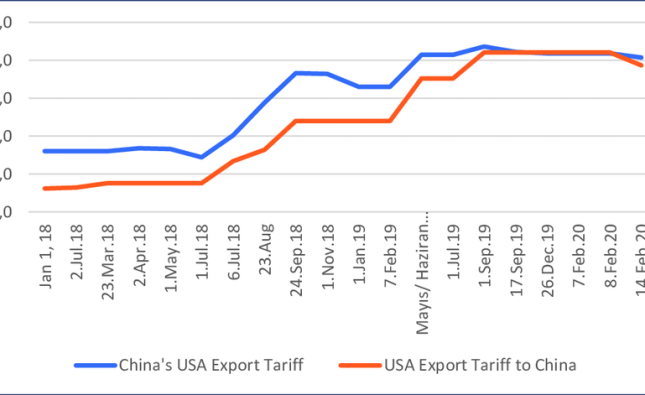
The US stock market experienced a significant pause in its upward momentum Stocks as Nvidia, a leading semiconductor company, saw its market capitalization fall below the $3 trillion mark. This event has raised concerns among investors and market analysts about the stability of the broader market, given Nvidia’s influential role in the tech sector. In this article, we will delve into the reasons behind Nvidia’s slip, its implications for the stock market, and provide an analysis of the current market conditions. Additionally, we will present a detailed comparative and analytical table to illustrate the key factors affecting the stock market and Nvidia’s performance.
Nvidia’s Market Cap Drop: Key Reasons

Nvidia’s market capitalization dropping below $3 trillion can be attributed to several factors. First and foremost, there has been a general correction in tech stocks after an extended period of high valuations. The semiconductor industry, in particular, has faced challenges due to supply chain disruptions and fluctuating demand.
Supply Chain Issues
The global semiconductor supply chain has been under pressure due to disruptions caused by the COVID-19 pandemic, geopolitical tensions, and natural disasters. These disruptions have affected production schedules and increased costs, which in turn have impacted Nvidia’s profitability and investor confidence.
Demand Fluctuations
While there was a surge in demand for semiconductors during the height of the pandemic due to increased reliance on digital infrastructure, remote work, and consumer electronics, the demand has since become more unpredictable. Factors such as the potential for an economic slowdown and changes in consumer spending patterns have contributed to this volatility.
Competition and Market Dynamics
Nvidia faces intense competition from other semiconductor giants like AMD and Intel. These competitors have been aggressive in their strategies, launching new products and technologies that challenge Nvidia’s market position. Additionally, the rapid advancement in AI and machine learning technologies requires continuous innovation, putting pressure on Nvidia to maintain its competitive edge.
Implications for the Stock Market
Nvidia’s market cap slip has broader implications for the US stock market, especially for the tech sector. The company is a bellwether for the industry, and its performance often influences investor sentiment and market trends.
Investor Sentiment
When a major player like Nvidia experiences a downturn, it can lead to a shift in investor sentiment. Market participants may become more cautious, leading to reduced trading volumes and increased volatility. This cautious approach can slow down market momentum and contribute to a more subdued trading environment.
Tech Sector Impact
Nvidia’s performance is closely watched as an indicator of the health of the tech sector. A decline in its market cap can trigger concerns about the overall growth prospects of the sector. This can result in a reevaluation of tech stock valuations and potential sell-offs, further impacting the market.
Broader Economic Indicators
The stock market often reflects broader economic conditions. Nvidia’s slip may be seen as a sign of potential headwinds facing the economy, such as inflationary pressures, interest rate hikes, or geopolitical uncertainties. These factors can influence investor behavior and market dynamics.
Market Analysis Table
The following table provides an analysis of the key factors affecting the US stock market and Nvidia’s performance:
| Factor | Impact on Market | Nvidia’s Influence |
|---|---|---|
| Supply Chain Disruptions | Increased costs, production delays | Reduced profitability, investor concerns |
| Demand Fluctuations | Volatile stock prices, uncertain growth | Unpredictable revenue, market cap decline |
| Competitive Pressure | Sector-wide reevaluation, innovation race | Market share threats, need for innovation |
| Investor Sentiment | Lower trading volumes, higher volatility | Decreased confidence, stock price drop |
| Economic Indicators | Market corrections, cautious outlook | Reflection of economic health, strategic adjustments |
Comparative Table: Nvidia vs. Competitors
The comparative table below highlights the performance and strategic positions of Nvidia and its main competitors, AMD and Intel:
| Company | Market Cap (June 2024) | Revenue (2023) | Key Strengths | Key Challenges |
|---|---|---|---|---|
| Nvidia | $2.9 Trillion | $26.9 Billion | AI leadership, strong GPU market | Supply chain issues, competition |
| AMD | $150 Billion | $16.4 Billion | Innovative CPU/GPU offerings | Market penetration, pricing power |
| Intel | $210 Billion | $79.0 Billion | Established market presence, diverse portfolio | Innovation lag, market share loss |
Future Outlook
Nvidia’s Strategic Moves
To regain its market cap and investor confidence, Nvidia will need to focus on several strategic areas. Continued innovation in AI and machine learning, expansion into new markets, and improving supply chain resilience are critical. Additionally, strategic partnerships and acquisitions could bolster its competitive position.
Market Sentiment and Economic Factors
The broader market will also be influenced by macroeconomic factors such as interest rates, inflation, and geopolitical developments. Investors will be closely monitoring these indicators to gauge the potential impact on stock performance.
Tech Sector Evolution
The tech sector is poised for continued evolution, driven by advancements in AI, 5G, and cloud computing. Companies that can effectively navigate these changes and address market challenges will be better positioned for growth.
Conclusion
Nvidia’s slip below the $3 trillion market cap mark has significant implications for the US stock market and the tech sector. While the company faces challenges related to supply chain disruptions, demand fluctuations, and competitive pressures, its strategic response will be crucial in determining its future performance. The broader market will continue to be influenced by investor sentiment and economic indicators, making it essential for stakeholders to stay informed and adaptable in a dynamic environment.
By analyzing the key factors and Stocks comparing Nvidia with its competitors, we gain a comprehensive understanding of the current market conditions and the potential paths forward for Nvidia and the tech sector at large. As the market evolves, close attention to these dynamics will be essential for making informed investment decisions.










